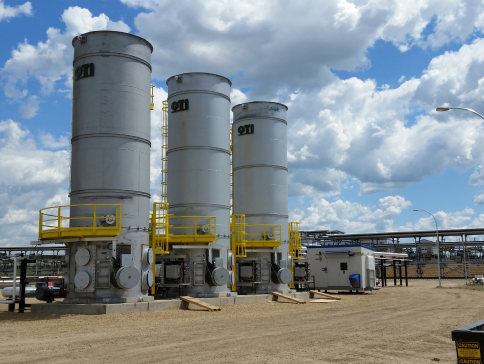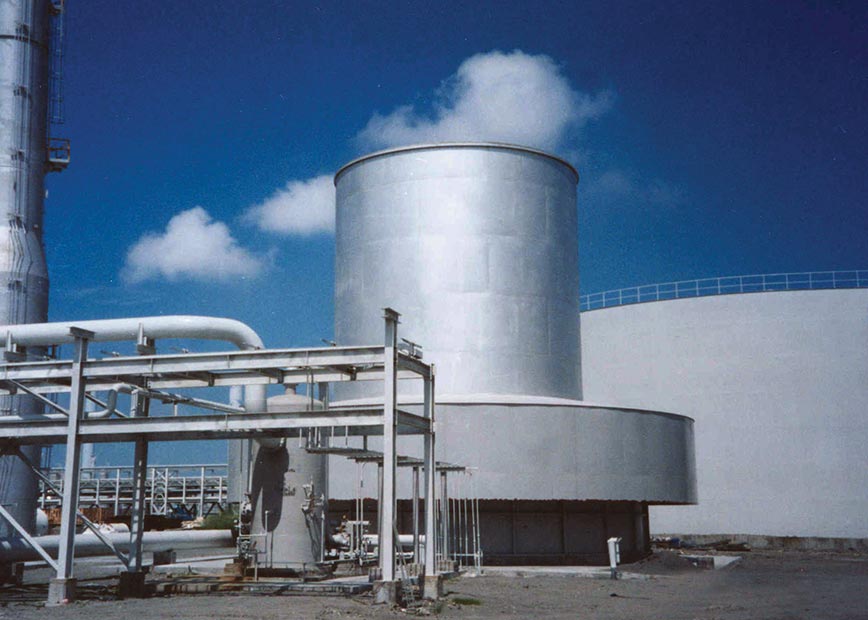
Enclosed flares provide very high combustion efficiency under any weather conditions. The flare is enclosed within a combustion chamber that controls the mixture of gas and air. The principle limitation is scalability. Operating within an enclosed space has the added advantage of allowing exit gases to be analysed for methane.
Enclosed flares feature a refractory-lined combustion chamber, where gas is burnt using multiple burners. Air for combustion is provided via natural draft or supplemented by blowers. The design is similar to thermal oxidisers but designed to handle high VOC streams. As the flame is concealed, its stability can be higher and smokeless operation is achieved with higher destruction efficiency and no visible emissionsAir pollutants in sufficient amount to be observable to the human eye or the observation of an emission of opacity or optical density above the threshold of vision. ref: https://www.ecfr.gov/current/title-40/chapter-I/subchapter-B/part-49/subpart-C https://www.ecfr.gov/current/title-40/chapter-I/subchapter-C/part-63/subpart-A/section-63.2… Learn more….

Advantages
Very high destruction efficiency (can average above 99.99%)
Smokeless operation
No visible flame – little to no noise and radiation levels at ground
Suitable for a wide range of gas compositions and pressures
Can be installed in tight places or close to processing facilities
Provides very high combustion efficiency regardless of weather conditions
Independently verified combustion efficiencies, can have provisions for sampling to provide measurable efficiency
Limitations
Increased dispersion risk during flame-out conditions due to lower height
Limited to no installations offshore due to footprint and capacity limitations
Not suitable for higher flowrates due to size limitations
Depending on design, maintenance of flare tips can be more challenging than elevated flares
Case study
An onshore gas processing facility explored the options to combust a high-sulphur content tail gas streams. Due to its low heating value, it would have required supplemental fuel gas to achieve full combustion in an elevated flare, increasing its overall and methane emissions.
The site has chosen to use an enclosed flare for such application, as it ensured very high combustion efficiency of the tail gas streams. It provided several benefits:
Maintaining effective cobustion efficiency and destruction efficiency are key to minimising methane from flaring. This can be achieved through improving the mixing of flare gas and air to enable complete combustion and/or by only lighting the flare when required using ignition and pilot-light systems that avoid the risk of venting.